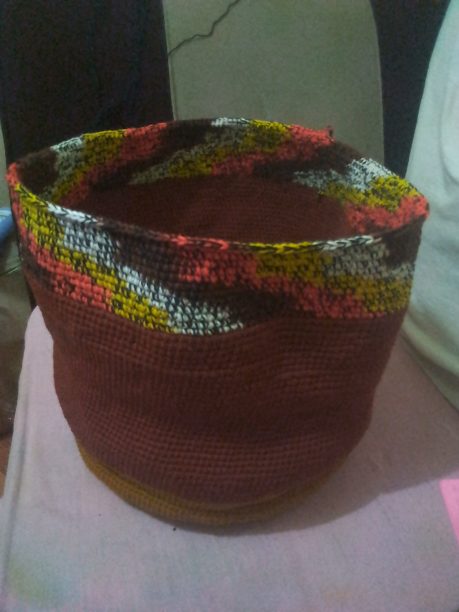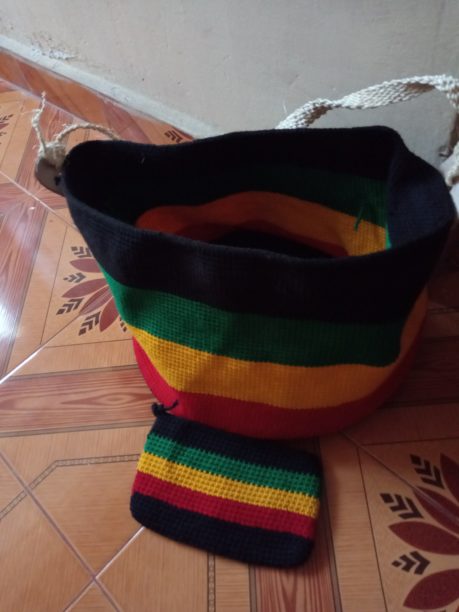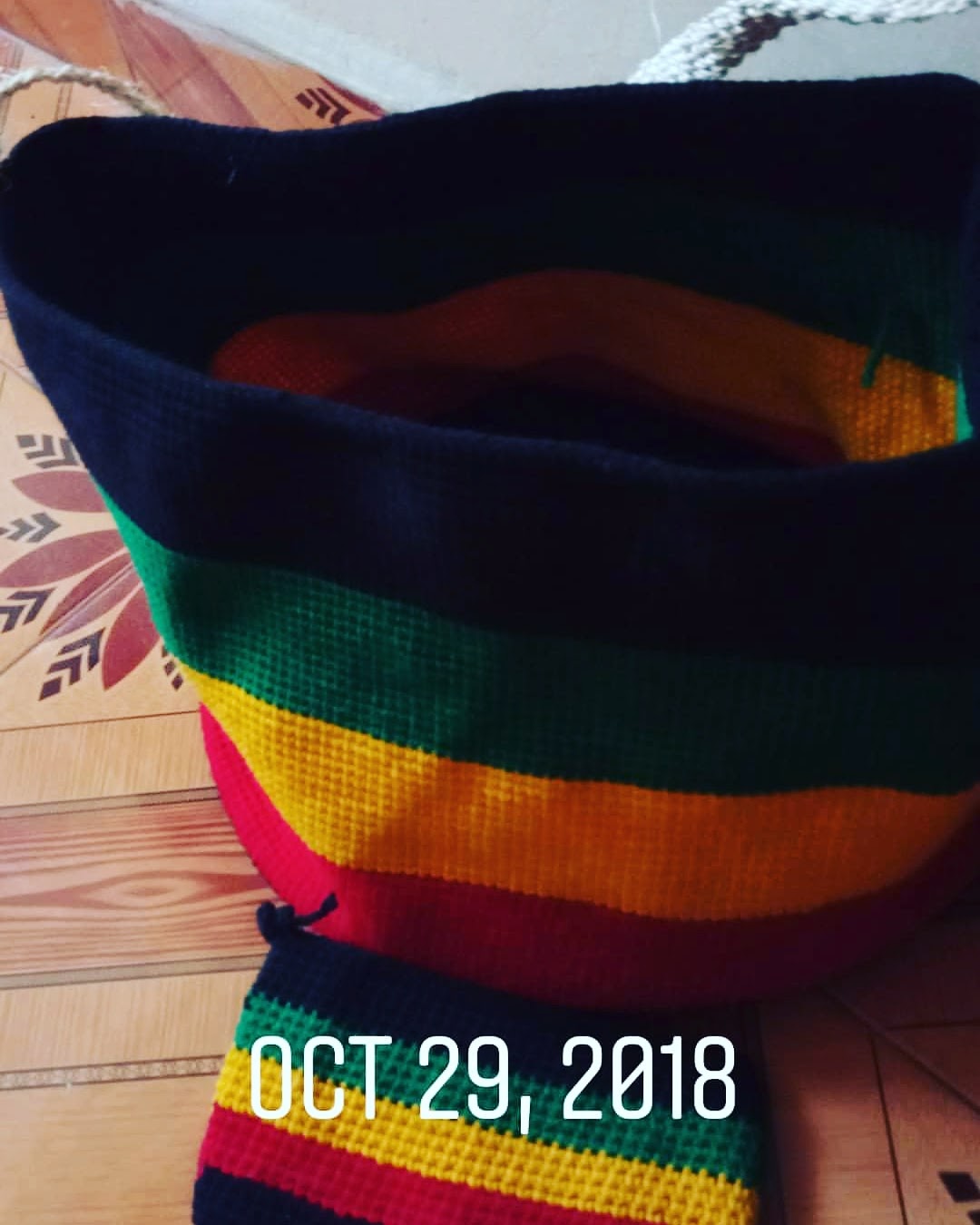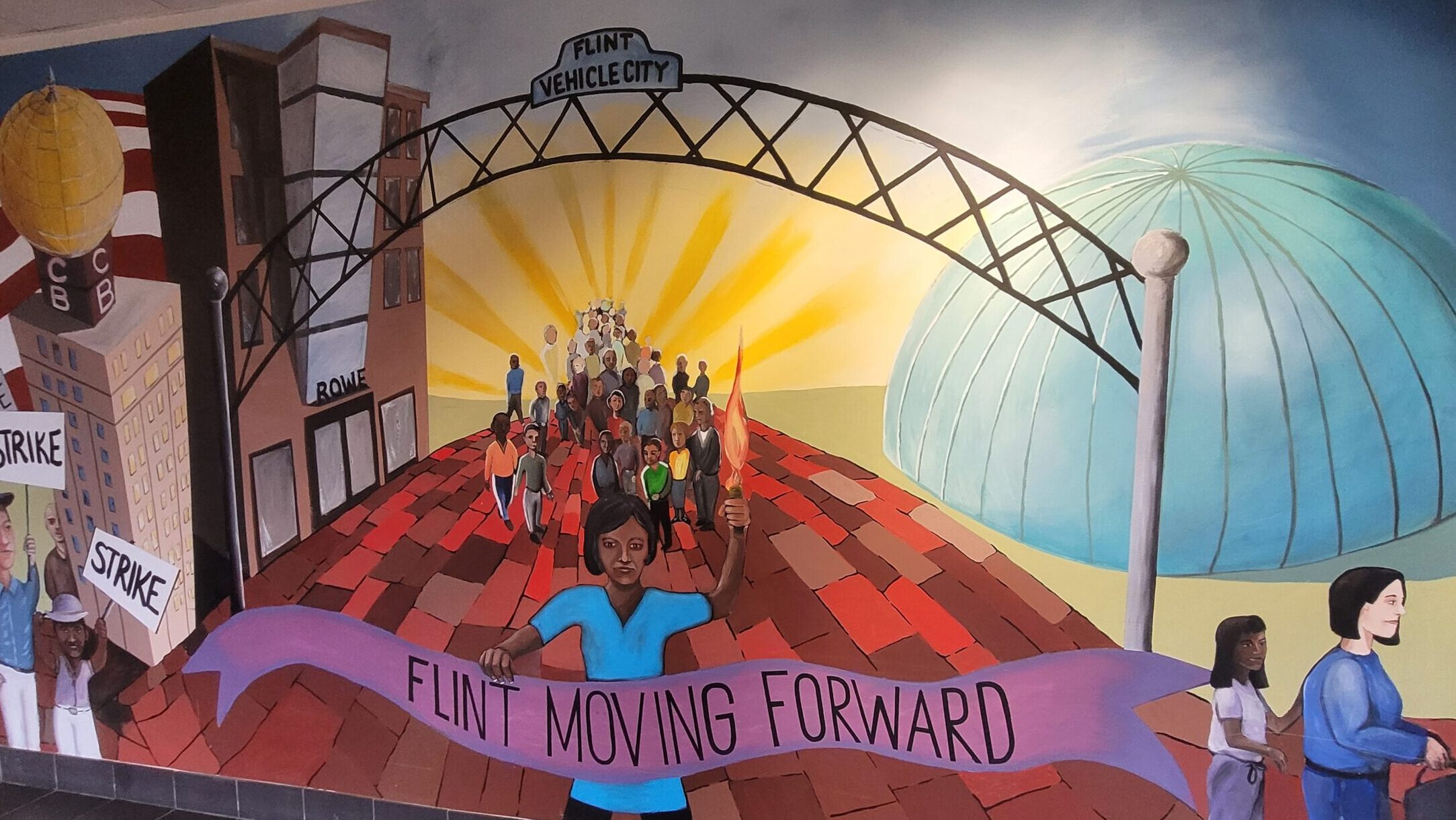I was running late for work, and all I could think of was how fast I could get to the boda boda stand, hop onto one, and get to work in time for morning assembly, more specifically the flag raising ceremony. When I arrived at the stand, I got onto the nearest boda boda and told the rider my destination. I asked him not to take the route through town because that added two minutes I was unwilling to give. I had on me a kiondo in Rastafarian colors—black, red, gold and green. As we left, one of the other riders shouted how great the basket looked, and asked if he could have it.
“No, I’ll make you one!” I shouted back, and off we roared.
Boda boda riders are notorious for catcalling—rarely do they make their needs so eloquently known. Perhaps it was the specific demand that made me ask my rider what the rider who wanted my kiondo was called. He told me it was J. Imagining the kind of kiondo I’d make for J helped pass the time until I got to my destination.
The kiondo I carried had a few flaws: I had not trimmed some threads and the straps needed to be reworked. I had made it to carry to the Too Early for Birds Brazen Edition, a celebration of Kenya’s historical women. I don’t carry handbags because I’ve never figured out the mechanics of matching shoes, belts, clothes, perfume, and necklaces. I prefer backpacks. Since I was going to be in Nairobi for only two hours, a backpack would be overkill so I made a kiondo.
Once, I was in Othaya and saw an old woman making ciondo (plural for kiondo) using sisal thread. I was intrigued and asked her to teach me. She turned me down flat, and insisted “modern” girls don’t need to learn the craft.
I had long pestered my mother to teach me how to make ciondo. She said I should concentrate on academics: pursue a graduate degree and, after that, pursue a PhD. Making ciondo was work for old women and those girls who had failed in school. Agreeing with my mother, my brother asked me why I wanted to learn a craft that primary school failures could accomplish. He insisted that I could accomplish so much more. What does one say in the face of such argument?
I tried to explain that it was not the economic value of the thing, but the aesthetic value. But my brother told me to put that energy into creative and academic writing. Joining the chorus of voices, my father said I should put my energy into academic pursuits and leave the crafting to school dropouts and old women.
Crafting is an escape. I work with deaf learners and it breaks me every single day. I will teach one thing in the morning and, when I review the lesson later in the day, not one learner remembers a thing. Maybe it is my teaching methods, maybe it is my signing they do not understand, maybe I am just not good enough. I need something to remind myself that I am good enough, that I am enough.
I met Mama M at a local market, where she was making and selling ciondo. I asked if she’d consider teaching me, but she refused, claiming that I’d take away her business. I was disappointed, but I decided I would teach myself; all I needed was to know the stitch and how to make the base. I asked to see one of the finished baskets. She obliged. I studied it. Hard. I needed to know how to make the base. She was using single crotchet stitch instead of the double crotchet stitch I was used to. When I asked Mama M how she constructed the base for the ciondo and then widened it, she told me to use my eyes. I could not for the life of me see the pattern of adding stitches, but I had a vague idea, and I decided to try.
I had thread left over from previous crafts projects so I tried to construct a kiondo. I failed spectacularly the first time. I took apart the work, tried again, and made it all wavy and wobbly. I took it apart and tried again. And failed again. There was a secret, and it was this secret that Mama M would not divulge. I lost count of how many times I failed to make it past four inches diameter. I thought long and hard and made that first base in my mind as many times as I made it in real life.
The base is the hardest thing to make because it has to be flat. The secret is the way the stitches are added; much later I learnt how to add after watching a YouTube tutorial on making table mats. I could have made my life easier had I gone to YouTube from the first instance, but I like to look at the answers at the back of the book when I have exhausted other avenues. Eventually I achieved a workable base. I made my first basket, and my mother finally accepted to teach me how to weave.

My mother whispered a base to life. As she constructed it, she told me when she was a girl she had to make ciondo tight enough to carry millet: the weave had to be close but pliable. She told me of her sister who makes ciondo that are works of art. Mother stopped making ciondo when she went to nursing school, because she was determined to make something of herself. Now at grandmother-years-old, she wanted me to go to graduate school and make something of myself. She felt crafting would distract me.
By the end of her story, I had missed how she laid the thread to begin. She gave me the piece to continue but my hands refused to be tamed: they galloped and stomped and reared high and kicked fit to kill a person. She put her hands on mine constantly to get me to relax my grip. She has very small hands. To hold down three of my fingers and guide my thumb and index fingers must have cost her a neuron or twelve. Eventually, she gave up and said my hands are my father’s: we excel in activities involving large muscles like carrying bulk items, building, slashing, cleaning, and sleeping. Small muscle activities need continuous concentration, which in my case was next to impossible.
J’s basket was right from the first stitch. The adding stitches were perfect, tension was on point, and all my muscles were in harmony.
On a rainy evening, J stopped me, asked whether I was serious about making him a kiondo, and how much I’d charge. I told him I’d promised to make him a basket and I was charging him nothing. He insisted no-one gives away their work for nothing, but I assured him it was gratis. He looked at me skeptically.
One afternoon I was going to loiter, and I carried the basket just in case I found him at the boda boda stand. I asked the rider nearest to me where J was, and J himself answered. I gave him a package and continued on my merry way.

A few weeks later, I was walking past the boda boda stand, and J called out and asked me to stop. So I did. He asked me to go closer, so I went. A crowd of riders gathered around, thanked me for the kiondo, and said it was very beautiful. It was overwhelming that something for one person was appreciated by the whole community.
One of them came over and put an end to all the gushing by asking if I could make hats in rasta colors. Others joined in, asking for gloves, pants, scarves, socks, even a suit.
“If you can make a basket,” one insisted, you can make a hat. it is the same basic technique.”
I told them I didn’t know how to make hats, mittens, pants, or anything else really. They heard nothing of it. They told me to go learn and return with samples.





